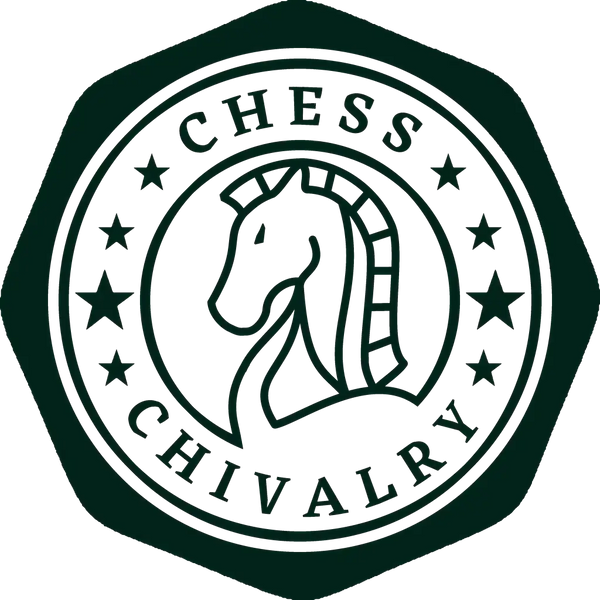
Chess & History: The Mathematical Beauty of Chess
Share
Chess, a game celebrated for its strategic depth and intellectual challenge, also holds a profound connection to mathematics. This ancient game, with its origins tracing back over a millennium, can be examined through a mathematical lens to reveal a rich tapestry of patterns, structures, and logical complexities. In this article, we will delve into the mathematical beauty of chess, exploring its geometric foundations, combinatorial complexity, strategic applications, and intriguing puzzles. Join us as we uncover how chess and mathematics intertwine to create a game that is as intellectually stimulating as it is aesthetically pleasing.
The Mathematical Structure of the Chessboard
At the heart of chess lies its iconic 8x8 grid, a geometric marvel that serves as the battlefield for countless strategic encounters. The chessboard's structure is not just a simple grid but a foundation for a wide array of mathematical concepts.
Geometric Properties and Coordinate Systems
The chessboard's 8x8 grid can be analysed through the lens of geometry, revealing symmetrical patterns and coordinate systems. Each square on the board can be uniquely identified by a coordinate pair, such as (1,1) for the bottom-left corner and (8,8) for the top-right corner. This coordinate system, akin to Cartesian coordinates, allows for precise notation of positions and movements.
Chess notation, such as algebraic notation, utilizes these coordinates to describe moves. For instance, a move from e2 to e4 succinctly indicates a pawn's advance. This notation system, grounded in mathematical principles, facilitates clear communication of game states and strategies.
Symmetry and Patterns
Symmetry plays a crucial role in the aesthetic and strategic aspects of chess. The board's mirrored symmetry along its horizontal and vertical axes introduces patterns that can be exploited by players. For example, understanding symmetry can help identify weaknesses in an opponent's position and craft effective attacks.
Beyond the board itself, individual pieces exhibit symmetrical movements. Rooks move along ranks and files, bishops along diagonals, and knights follow unique L-shaped paths. Recognizing these symmetrical patterns aids in visualizing potential moves and anticipating opponents' strategies.
Combinatorial Complexity of Chess Moves
One of the most captivating aspects of chess is its combinatorial complexity. The sheer number of possible positions and moves in a game of chess is staggering, presenting a rich field for mathematical exploration.
Game Tree Complexity
The game tree of chess, which represents all possible moves from a given position, is a testament to the game's complexity. The branching factor, or the average number of legal moves available per turn, contributes to an exponentially growing tree of possibilities. Estimates suggest there are more possible chess games than atoms in the observable universe, underscoring the vastness of the game's complexity.
Famous Combinatorial Problems
Several famous combinatorial problems in chess have captured the imagination of mathematicians and enthusiasts alike. One such problem is the Knight's Tour, which involves moving a knight to visit every square on the board exactly once. This problem, dating back to the 9th century, showcases the combinatorial nature of chess and has inspired numerous mathematical studies.
Another well-known problem is the Eight Queens Puzzle, which challenges players to place eight queens on a chessboard so that no two queens threaten each other. This puzzle exemplifies the intersection of chess and combinatorial optimization, with solutions requiring logical reasoning and strategic planning.
Mathematical Strategies in Chess
Mathematics is not confined to abstract problems; it permeates the strategies and decision-making processes in chess. From probability and statistics to game theory and algorithms, mathematical principles guide players in their quest for victory.
Probability and Statistics
Probability and statistics play a significant role in chess strategy. Players often assess the likelihood of certain moves leading to advantageous positions based on historical data and pattern recognition. By analysing previous games and identifying common trends, players can make informed decisions that maximize their chances of success.
For instance, statistical analysis of opening moves has revealed popular openings that lead to favourable positions. The King's Pawn Opening (1.e4) and the Queen's Pawn Opening (1.d4) are statistically favoured by many top players. Understanding these probabilities allows players to navigate the opening phase with greater confidence.
Game Theory
Game theory, a branch of mathematics that studies strategic interactions, offers valuable insights into chess strategies. Concepts such as Nash equilibrium, where players reach a state where no one can improve their position unilaterally, have applications in chess decision-making.
In chess, players often engage in a process of anticipating and countering their opponent's moves, akin to a game-theoretic analysis. This mental exercise involves evaluating the potential outcomes of various moves and selecting strategies that maximize their chances of achieving a favourable position.
Algorithmic Approaches
Advancements in computer science have led to the development of powerful algorithms that analyse chess positions and suggest optimal moves. Algorithms like the Minimax algorithm and Alpha-Beta pruning are fundamental to modern chess engines, which can evaluate millions of positions per second.
The Minimax algorithm, for example, simulates the game tree to determine the best move by minimizing the potential loss in the worst-case scenario. Alpha-Beta pruning enhances this process by eliminating branches of the tree that do not need to be explored, significantly improving efficiency.
Chess Puzzles and Mathematical Problems
Chess puzzles, with their blend of logic and creativity, are a captivating manifestation of the mathematical beauty in chess. These puzzles challenge players to apply mathematical reasoning to solve intricate problems and uncover elegant solutions.
Famous Chess Puzzles
Several famous chess puzzles have become iconic in the world of chess and mathematics. The "Immortal Game," played by Adolf Anderssen and Lionel Kieseritzky in 1851, is celebrated for its brilliant combinations and sacrifices. Analysing this game reveals the underlying mathematical principles that guided Anderssen's moves.
The "Mate in Two" puzzles, where players must find a sequence of moves to deliver checkmate in two moves, exemplify the logical deduction required in chess. These puzzles often require players to think several moves ahead, considering all possible responses from their opponent.
Role of Logic and Deduction
Logic and deduction are fundamental to solving chess puzzles. Players must evaluate the constraints of the puzzle, identify key pieces and positions, and formulate a plan that satisfies the given conditions. This process mirrors the logical reasoning used in mathematical proofs and problem-solving.
Chess puzzles also encourage creative thinking, as players explore unconventional moves and sacrifices to achieve their objectives. This blend of logic and creativity enhances players' problem-solving skills and fosters a deeper appreciation for the mathematical intricacies of the game.
Contributions of Mathematicians and Computer Scientists
The intersection of chess and mathematics has attracted the attention of renowned mathematicians and computer scientists. Alan Turing, a pioneer of computer science, designed one of the earliest chess-playing algorithms. His work laid the foundation for modern chess engines that leverage mathematical principles to analyse positions and suggest optimal moves.
Mathematician John von Neumann, a key figure in game theory, made significant contributions to the study of strategic decision-making in chess. His insights into equilibrium strategies and zero-sum games have profound implications for chess strategy and analysis.
Conclusion
Chess and mathematics are intertwined in a harmonious dance of logic, strategy, and beauty. From the geometric elegance of the chessboard to the combinatorial complexity of possible moves, mathematics permeates every aspect of the game. The application of mathematical principles enhances players' understanding of strategies, probabilities, and algorithms, while chess puzzles provide a platform for logical reasoning and creative problem-solving.
As we explore the mathematical beauty of chess, we gain a deeper appreciation for the intellectual richness and timeless appeal of this ancient game. Whether you're a seasoned chess player or a curious mathematician, the interplay between chess and mathematics offers a fascinating journey into the depths of human cognition and creativity. So, the next time you sit down at the chessboard, remember that you are not just playing a game – you are engaging with a profound mathematical masterpiece.
Thank you for your attention and interest in the topic. If you have any further questions, please feel free to contact me through my contact form. Besides playing chess on a computer, using a real chessboard remains popular. If you are interested in chess pieces or tournament-style chessboards, please have a look at my assortment.
I wish you much enjoyment in the game, success, and rapid progress in learning.
See you soon.
Stefan
